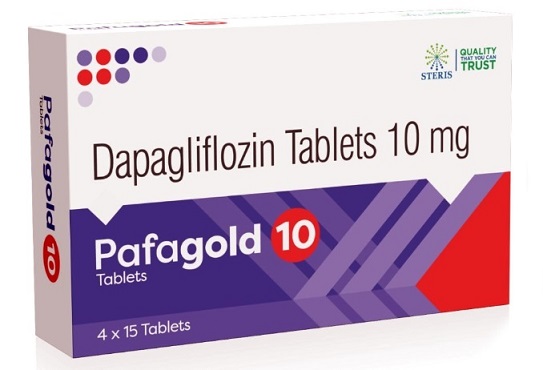Nikhil Prasad Fact checked by:Thailand Medical News Team Feb 16, 2025 1 month, 3 weeks, 4 days, 5 hours, 22 minutes ago
Medical News: Sepsis-induced cardiomyopathy (SIC) is a severe heart complication that arises in patients suffering from sepsis, a life-threatening condition caused by widespread infection in the body. (Severe COVID-19 also causes this condition). This form of cardiac dysfunction has long been associated with increased mortality and limited treatment options. Researchers from Tianjin Medical University General Hospital in China have now explored the potential of dapagliflozin, a widely used diabetes drug, in mitigating the effects of SIC. Their findings offer promising insights into a new therapeutic approach for this critical condition.
 Dapagliflozin as a Treatment for Sepsis-Induced Cardiomyopathy
Dapagliflozin as a Treatment for Sepsis-Induced Cardiomyopathy
Dapagliflozin belongs to a class of drugs known as sodium-glucose cotransporter 2 (SGLT2) inhibitors, primarily used for managing type 2 diabetes. However, recent studies suggest that it may have additional benefits beyond blood sugar control. This
Medical News report highlights a new study that demonstrates how dapagliflozin could play a significant role in protecting the heart during severe infections.
Key Findings from the Research
To understand the impact of dapagliflozin on sepsis-induced cardiomyopathy (SIC), researchers conducted both clinical and laboratory-based experiments. They first examined real-world patient data to assess whether patients who were already taking dapagliflozin before hospitalization had better survival outcomes compared to those who were not using the drug.
The results were striking. Patients who had been on dapagliflozin before being admitted to the hospital had significantly lower rates of major adverse cardiovascular events (MACEs) and improved survival rates.
To further verify these clinical observations, the researchers created an experimental model of sepsis-induced cardiomyopathy in mice using a method called cecal ligation and puncture (CLP). This method closely mimics the biological conditions of SIC in humans. The mice were divided into groups - some received dapagliflozin while others did not. The results showed that mice treated with dapagliflozin exhibited improved heart function, reduced levels of myocardial injury markers, and significantly less damage to heart tissues compared to untreated mice.
Mechanisms Behind Dapagliflozin’s Cardioprotective Effects
One of the most exciting aspects of the study was its multi-omics approach, which combined transcriptomics and metabolomics to explore the molecular changes induced by dapagliflozin in SIC. Through this method, the researchers identified several pathways through which the drug exerts its cardioprotective effects.
-Reducing Inflammation: Sepsis leads to severe inflammation, which can damage the heart. The study found that dapagliflozin suppresses key inflammatory pathways, lowering the levels of harmful inflammatory markers.
-Enhancing Autophagy: Autophagy is a natural process where cells remove damaged components and recycle them. Dapagliflozin was sh
own to promote this process, preventing excessive cell damage in the heart.
-Regulating Energy Metabolism: Sepsis disrupts normal cellular metabolism, leading to energy depletion in heart cells. Dapagliflozin helps restore normal metabolic processes by enhancing pathways like AMPK signaling and lipid metabolism.
-Reducing Oxidative Stress: The drug was also found to decrease oxidative stress, a harmful condition that can accelerate heart damage during sepsis.
Clinical Implications and Future Directions
The study’s findings suggest that dapagliflozin could be repurposed as a treatment for sepsis-induced cardiomyopathy, offering hope for critically ill patients. Given its well-documented safety profile in treating diabetes and heart failure, its use in SIC could represent a breakthrough in intensive care medicine.
However, further studies are needed before dapagliflozin can be widely recommended for SIC patients. Large-scale clinical trials are required to confirm these findings in broader populations and to determine the optimal dosing strategies for sepsis patients. Moreover, future research should explore whether dapagliflozin can be combined with other therapies to enhance its protective effects.
Conclusion
This research sheds light on the potential of dapagliflozin to mitigate the devastating effects of sepsis-induced cardiomyopathy. By reducing inflammation, enhancing energy metabolism, and improving heart function, dapagliflozin emerges as a promising candidate for improving survival rates in sepsis patients. The findings of this study not only support the expansion of dapagliflozin’s therapeutic applications but also provide crucial insights into the mechanisms of heart damage in sepsis.
The study findings were published in the peer-reviewed journal: Biomolecules.
https://www.mdpi.com/2218-273X/15/2/286
For the latest on Sepsis, keep on logging to Thailand
Medical News.
Read Also:
https://www.thailandmedical.news/news/study-finds-that-diabetics-taking-sglt-2i-drugs-like-canagliflozin,-dapagliflozin,-and-empagliflozin-prior-to-covid-19-have-reduced-adverse-outcomes
https://www.thailandmedical.news/news/thailand-medical-study-finds-fermented-houttuynia-cordata-juice-protects-against-heart-inflammation-and-damage-in-sepsis
https://www.thailandmedical.news/news/phytochemicals-as-potential-saviors-against-covid-19-associated-sepsis
https://www.thailandmedical.news/articles/sepsis
https://www.thailandmedical.news/pages/thailand_doctors_listings
